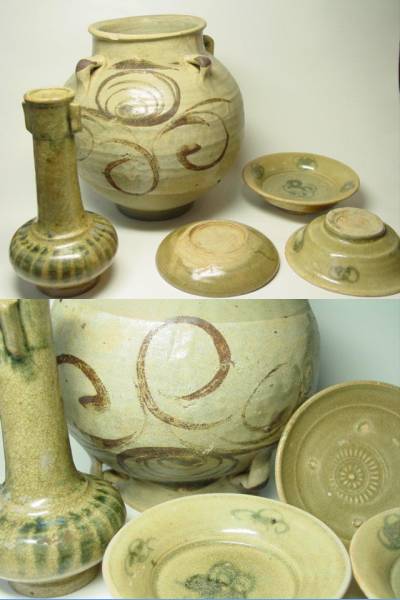
Yunnan wares from Yuan period. The lug handled jar with brownish tone underglaze blue is from the Luo Chuan kiln. © Research and Photo: Simon Ng, Hong Kong, 2004
In addition to the kiln complexes at Jingdezhen, a few kilns in other parts of China also produced blue-and-white wares during the Yuan period. For example, a vase decorated in underglaze blue that was excavated in 1973 from a Yuan-dynasty burial in Yunnan Province has been identified as coming from kilns in Yuxi xian in the same province. This pottery is rather crude in comparison to the wares produced at Jingdezhen. (Valenstein, 1989).
Yunnan is a comparably remote hilly area south of the Yangtze, bordering to Sichuan in the north and Vietnam (the old Annam) in the south. Proper excavations started only some ten years ago. When the first appearance of some Yunnan kiln shards came to London and later on Oxford for an exhibition some 25 years ago, it was described as Yuan. More excavations and published materials on these kilns today showed they are more likely of the Ming Period.
There are about ten kilns discovered in Yunnan so far, Yuxi and Jian shui are the two largest who also produced the best pieces. They are only 50 km apart and the excavated pieces are almost identical.
At the moment Yunnan blue and white pieces are mainly divided into three groups:
According to the local records and archeology materials, green glaze wares appeared in Yunnan Kilns between late Song to Yuan, the decorations and skills derived from the local pottery making. Around late Yuan period, b/w wares were fired using local cobalt and materials, picking up the decorations from the Jingdezhen wares. These group of Yunnan b/w wares ceased in late Ming when the more superior and less expensive Jingdezhen wares took over the Yunnan market as well.
A